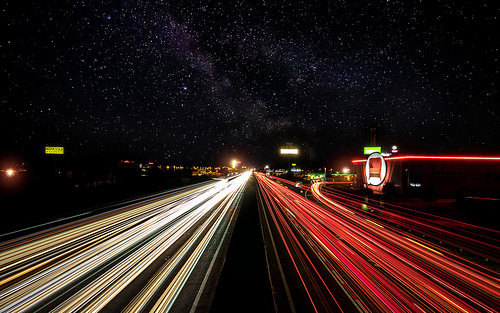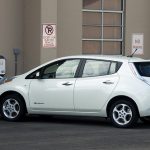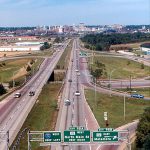What will American transportation look like in 2030?
What does the America’s transportation future look like? A new study from the RAND Corporation, Exploring Future Transport Demand in the United States, envisions two different scenarios. The study’s research team imagines two sequences set in 2030, drawing on expert opinions as well as exploring the impact current transportation realities and choices will have on the transportation landscape of the future.

Researchers looked at two different models of fuel scarcity impacts, and unsurprisingly, America’s transportation picture looks different in each. Image from zeitfaenger.at.
The study, which targets legislators, public agencies, and private-sector entities, was designed to help transportation stakeholders and decision-makers “understand how today’s decisions might play out in the future.” The study is grounded in two questions: “How do we plan and build infrastructure in the coming decades to meet our customers’ needs, not only in the short term but also for the life of the infrastructure?” and “How do we develop services and capabilities that will not be obsolete by the time they are implemented?”
Researchers developed the two scenarios using a five-step process that involved selecting “influencing areas” that directly affect mobility, holding expert workshops and asking experts for their opinions and projections, and identifying consequences of current transportation decisions on future mobility. Data included expert opinions on five key areas: demographics, economics, energy, transportation funding, and technology. The study’s researchers developed two scenarios for 2030: (1) No Free Lunch, and (2) Fueled and Freewheeling.
The first scenario features stronger regulations that have reduced dependence on oil and GHG emissions. Further, GDP and oil consumption “are no longer coupled; oil consumption is down but the economy has been growing at a healthy rate.” In this scenario, new zoning restrictions have led to growth in urban and suburban communities — as well as in the use of public transit. On this path, the U.S. “is dealing with the issue of climate change directly and, to the surprise of many, this has a positive rather than a negative effect on the economy.”
In the Fueled and Freewheeling scenario, on the other hand, “the future is a fairly comfortable place with low energy costs and a thriving economy.” The roads are filled with more drivers, and they are driving safely and more productively, and the country’s population is growing. But there are also major downsides: “A reluctance to raise taxes has left the transportation sector severely underfunded. A few states have adopted modified mileage-fee systems, and a few big cities have imposed congestion charges. But overall, the condition of U.S. roads and bridges is getting worse, although the extent of the decline varies greatly.” The environment suffers in this scenario too, as only those states which are significantly impacted by climate change have adopted green policies.
Oil prices, environmental regulations and highway revenues and expenditures will likely determine which scenario — the two mentioned here, or another “wildcard” one that has been unforeseen — will eventually play out. But the purpose of discussing these two scenarios is three-fold: to offer a “reality check” on existing plans to transportation agencies; to encourage “out-of-the-box thinking” and perhaps unusual solutions to problems; and to help decision makers prepare for change. “Change could be anticipated and prepared for,” write the researchers, “leading to better decisions that will affect the future of mobility in the United States.”
Related Posts
Category: Transportation

















